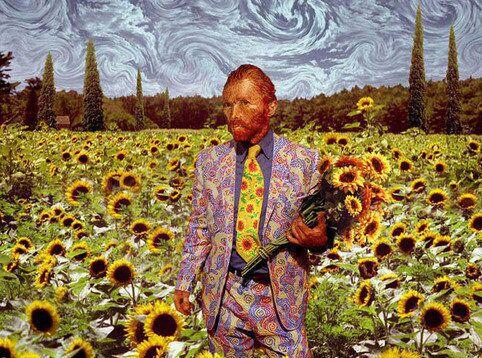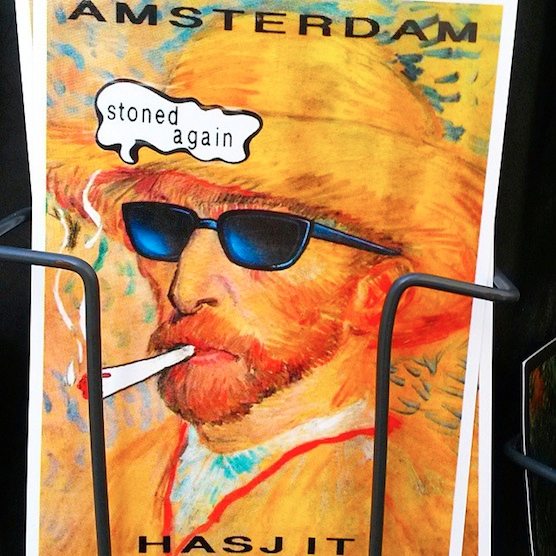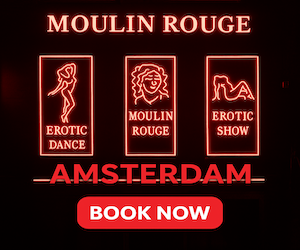Van Gogh Museum
Posted on: augustus 26, 2025

Van Gogh Museum in Amsterdam
Van Gogh Museum Amsterdam draws millions yearly—yet most visitors miss its hidden gems. Don’t make the same mistake!
Overview of the Museum
The Van Gogh Museum in Amsterdam is one of the most visited art museums in the world. It opened in 1973 and today holds the largest collection of Vincent van Gogh’s paintings, drawings, and letters. The museum is located at Museumplein, right next to the Rijksmuseum and Stedelijk Museum, making it part of the city’s cultural heart.
This museum tells the story of Van Gogh’s life, from his early works to his final paintings. Visitors can follow his artistic journey and see how his style changed over time. It’s not just about the art — it’s about getting to know Van Gogh as a person.
Quick facts:
-
Opened: 1973
-
Location: Museumplein, Amsterdam
-
Collection: 200+ paintings, 500+ drawings, 700+ letters
-
Visitors per year: Over 2 million
The Van Gogh Museum is located on the Museum Square, next to the Rijksmuseum and 20 minutes away from the Red Light District. This museum has the largest collection of art works made by Vincent Van Gogh in the world. The Van Gogh museum contains 200 paintings, 400 drawings and 700 letters by Van Gogh.
Highlights of the Collection
The museum’s collection is a must-see for art lovers. It includes Van Gogh’s most famous works as well as pieces that show his struggles and experiments. Each floor of the museum follows a theme, making it easy to explore step by step.
Famous paintings you should not miss:
-
The Potato Eaters (1885) – his first masterpiece
-
Sunflowers (1889) – one of the most iconic still-life paintings
-
Almond Blossom (1890) – painted for his newborn nephew
-
Wheatfield with Crows (1890) – often seen as his last work
Besides paintings, the museum also showcases Van Gogh’s letters, giving insight into his thoughts and emotions. His words reveal his struggles with mental health and his passion for art.
Tip: Don’t rush through the collection. Take time to see the details, especially the brushstrokes and color changes in his later works.
Visitor Experience
The Van Gogh Museum is designed to be easy to explore. Each floor focuses on a different part of Van Gogh’s life, from his early years in the Netherlands to his final months in France.
Visitors can enhance their experience with a multimedia guide, available in multiple languages. This device shares stories, background details, and even music to make the art come alive.
What to expect inside:
-
Thematic floors showing his artistic journey
-
Multimedia guide with audio and video
-
Family-friendly activities and workshops
-
Temporary exhibitions with other artists connected to Van Gogh
The museum also has a bookshop and a café, perfect for taking a short break. The gift shop offers art prints, books, and unique souvenirs you won’t find elsewhere.
Practical Information
Planning ahead makes your visit smoother. The Van Gogh Museum is one of Amsterdam’s busiest attractions, so tickets sell out fast.
Basic details to know before you go:
| Category | Info |
|---|---|
| Openingstijden | Daily, usually 9:00 AM – 5:00 PM (longer in summer) |
| Tickets | Must be booked online, timed entry |
| Accessibility | Fully wheelchair accessible |
| Locatie | Museumplein, 5 min walk from Rijksmuseum |
Best times to visit:
-
Early morning (right after opening)
-
Late afternoon (fewer crowds)
-
Weekdays are less busy than weekends
Buying tickets online is a must. You can choose a time slot that works for you, which helps avoid long lines at the entrance.
New: Prostitution exhibition Easy Virtue in the Van Gogh Museum

Eenn impression of the Easy Virtue gallery.
There is a brand new exposition in the van Gogh – all about sex work in the 19th century (1850 – 1910). It can be seen between February 19th and June 19th. Today (February 23), we visited the museum, because we were keen to see all these paintings and drawings of prostitution. The Easy Virtue was amazing! We really enjoyed it and learned a lot. We would definitely recommend this exhibition – it’s a must-see!
Prostitution in French Art, 1850-1910
In the second half of the 19th century the Paris avant-garde embraced every aspect of metropolitan life. The fringes of society were also part of this modern theme. Prostitution, which was ubiquitous in the French capital, proved to be a fascinating subject for artists. To secure public health and preserve high moral standards, France began to set up a regulatory system in 1802. Prostitutie was tolerated under strict conditions, but it was not supposed to be visible, and polite society was shielded as much as possible from the sight of it. As a result, works of art initially contained only veiled references to the subject, but artists gradually lef less & less to the imagination.

A prostitute painted by Vincent van Gogh.
Uncertainty and ambiguity
The regulations permitted registered prostitutes to walk the streets as soon as the gas street lamps were lit. Unregistered prostitutes could be imprisoned without trial, so they did their best to be unrecognizable as such. As a result, it was frequently difficult to distinguish between respectable women and prostitutes in the streets of Paris. Artworks treating the subject of prostitution were often deliberately ambiguous.
95% of the artworks we’ve seen are really good! A few of the Easy Virtue’s paintings are so impressive that we have to share it with you!
The Thorny Path (The Courtesan’s Carriage), 1873

Bron: The Philadelphia Museum of Art
Thomas Couture – an influential history painter and teacher – described his painting as follows: “a real bitch attached to her carriage, to her luxury arid to her different lovers.” By means of this symbolic scene, he criticized the fact that women use their sexuality to gain power over men, and lamented the powerlessness of men to resist. At the same time, the painting was an indictment of the double standards of decadent French society.
Rolla, 1878

Bron: Wikimedia.org
Gervex based this scene on the poem Rolla by Alfred de Musset. The painter depicted the protagonist, Jacques Rolla, the lewdest of all Parisian residents, on the point of committing suicide because he is ruined. He cast a last glance at Marion, the prostitute with whom he has just spent the night. The sight of this nude was considered so scandalous that painting had to be removed from the Paris Salon (the official art exhibition).
Buy Entrance Tickets for Easy Virtue Exhibition
You need to have a special entrance ticket to enter this exhibition. Here’s what you need to do:
- Buy a Van Gogh Museum with with Voucher Lane Access (and avoid the standard queues)
- Try to visit the museum when it’s quieter: 9 am – 11 am
One of the best museums of Holland!
The building is has several levels, each floor showing a different aspect of Van Gogh’s work and the work of his contemporaries. The museum itself was established in 1973, 83 years after Van Gogh’s death, as commissioned by the Dutch government. An audio tour through this museum can bring you closer Van Gogh’s work – it’s quite interesting to hear a bit more about these beautiful paintings.
About Vincent van Gogh
The collection of the Van Gogh museum mostly originated from the heritage of Vincent’s brother Theo. Vincent van Gogh studied Greek an Latin in Amsterdam for a year, in order to prepare for an education in theology which he never even started. Eventually, he devoted himself completely to painting.
As a painter, he was far ahead of his time; he managed to sell just a few paintings during his lifetime. His brother Theo sent him money from time to time, so that Vincent could survive. In 1890 he put an end to his short and turbulent life. He was 37 years old.
Van Gogh wasn’t that successful with the ladies either – quite often he visited prostitutes. He even painted some sex workers.

We saw this postcard of Vincent van Gogh on Amsterdam’s Albert Cuyp Market.
The Patato Eaters by Van Gogh
One of the most impressive paintings from Van Gogh’s early period is “The Potato Eaters”, showing a peasant family from the peat district east of Eindhoven – a city in the South of Holland. They made a poor living as peat cutters, and their meal consisted mainly of potatoes. Van Gogh brilliantly sketched their gnarled faces and the harshness of the lives of the poor in the country.

Tips for Art Lovers
For those who want more than just a quick tour, there are ways to make the most of your visit. The Van Gogh Museum pairs well with other museums nearby, like the Rijksmuseum or the Stedelijk. Together, they create a full day of art exploration.
Tips to get the best experience:
-
Book your ticket at least a week in advance
-
Use the multimedia guide for extra insight
-
Plan 1.5–2 hours for the visit
-
Visit nearby attractions: Rijksmuseum, Vondelpark, and Heineken Experience
The museum also hosts temporary exhibitions that connect Van Gogh to other artists, such as Monet, Gauguin, or modern painters inspired by him. If you love art history, these shows add extra depth to your visit.
Nearby food options: The Museum Quarter has many cafés and restaurants. For a local touch, try Dutch pancakes or poffertjes after your visit.
TIP! Skip the Line at the Van Gogh Museum
When you want to take a visit to the Van Gogh Museum, the best thing to do is ordering an entrance ticket in advantage. Because of the popularity it’s better to buy a ticket online, so you can skip the line (which can be really long). It’s a waste of time to stand behind in the que.




